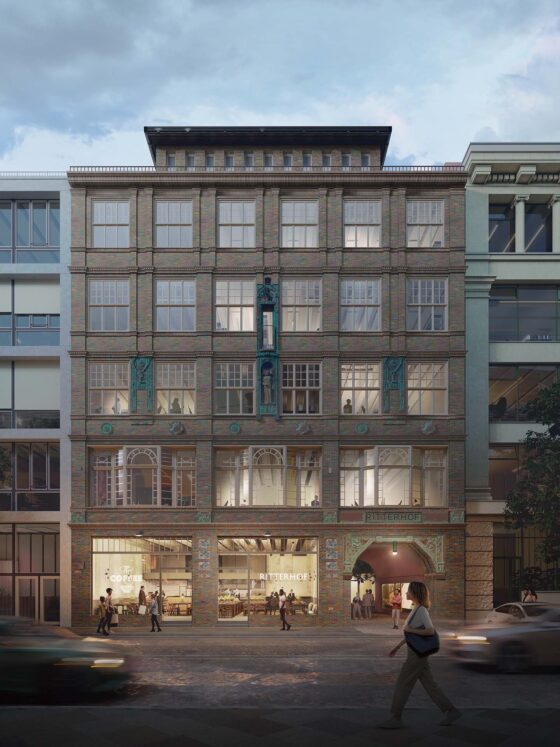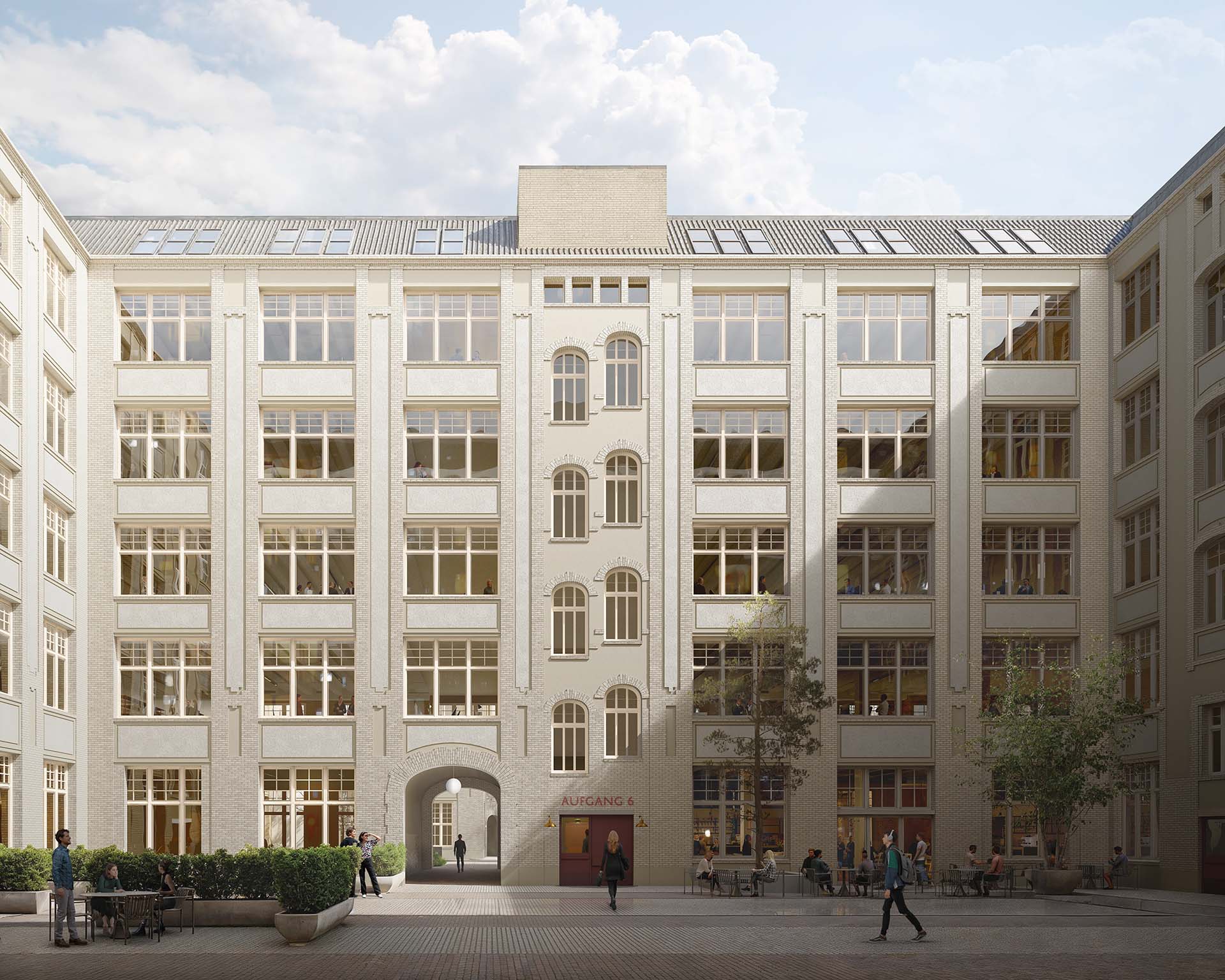Back to the future
PROPERTY
Characterized by a design that was remarkably modern for its time, the architects Schilbach and Schweitzer planned the Ritterhof in an almost visionary way at the beginning of the 20th century.
It’s as though they foresaw that the building would continue to provide innovative companies with a flexible and inspiring working environment in 2024. They designed the inner courtyards with white glazed bricks to maximize daylight. Additionally, the Ritterhof was constructed with a pioneering reinforced concrete structure, one of the first of its kind in Berlin’s industrial construction. Spacious rooms boasting impressive ceiling heights up to the ridge, its own “electric power station,” and elevators up to the fifth floor marked the Ritterhof as a trailblazer of its era. Moreover, with underground gasoline depots and a petrol pump for the first motorists replacing traditional horse stables in the courtyard, the building was at the forefront of avant-garde trends around 1900.
Yet, despite prioritizing functionality and flexibility in their design, the architects didn’t sacrifice aesthetic appeal. Unlike the typical utilitarian “rental factories” of the time, they achieved a delicate balance between commercial pragmatism and grandeur, blending neo-Renaissance, neo-Baroque, and early Expressionist styles. This successful fusion still imbues the Ritterhof with its distinctive charm today. The vividly glazed façade facing Ritterstrasse and the entire first courtyard adorned with “distinguished plaster architecture” illustrate this, thanks to the skilled craftsmanship of plasterers and sculptors such as Johannes Götz. Known for his work on Charlottenburg Town Hall and Berlin Cathedral’s façade, Götz crafted the statue of the eponymous knight, other figurative representations of commercial professions, and the “Ritterhof” relief in the building’s archway.

Detailed façade
facing Ritterstrasse
Even in its early days, the diverse houses and spaces within Ritterhof were occupied by craftsmen from various trades – a legacy that still underpins its small-scale rentals today. Businesspeople from around the globe passed through its magnificent archway to admire and purchase masterpieces. At the turn of the century, Ritterstrasse was hailed as Berlin’s “Golden Mile”; nowhere else offered such a vast array of goods, nor such prolific production and exhibition. Ritterstrasse had evolved into the commercial nucleus of the metropolis, rivaling the shop windows of Friedrichstrasse and Leipziger Strasse. This prominence prompted the Scheck heirs from Stettin to commission the construction of Ritterhof for their trading enterprise. The spirit of innovation and productivity that prevailed then endures today through the creative endeavors of digital pioneers within one of Berlin-Kreuzberg’s last remaining commercial courtyards.
The inner courtyard in the historic building
